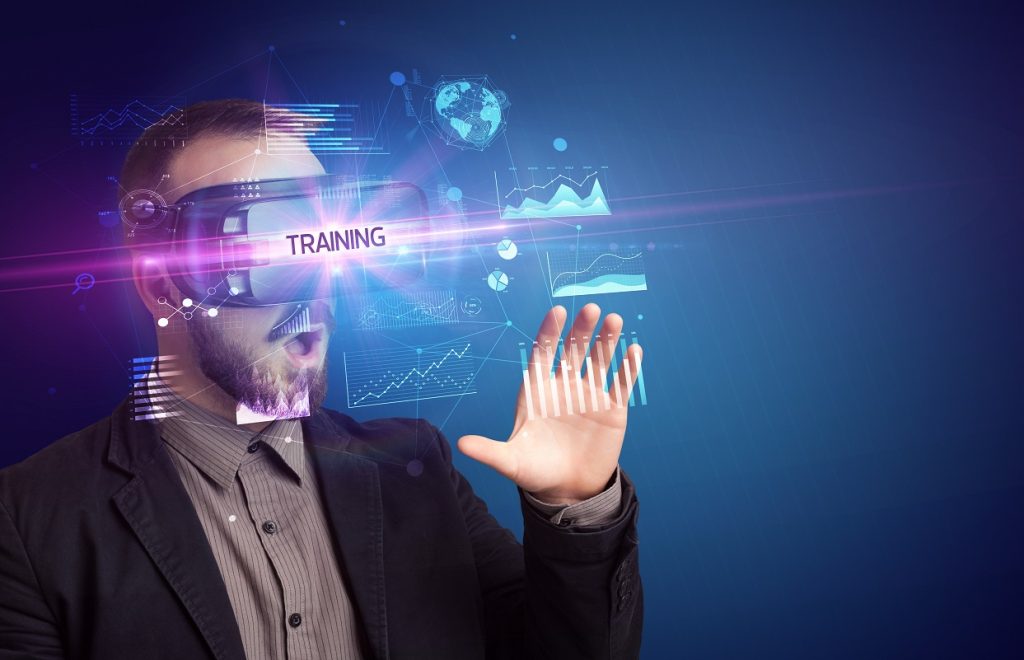Why VR Training Creates Unforgettable Experiences
Training in virtual reality is no longer a thing of the future. Especially in pandemic times, this format offers incredibly intense training experiences that no other online format can provide. Discover why this is the case and the advantages VR training offers in this blog article.
VR: A Growing Market
According to forecasts, global revenue from virtual reality in the consumer market is expected to reach around $6.2 billion by 2023. In a survey, it was found that in 2020, 37% of respondents were interested in using VR glasses, compared to only 17% in 2018 (Source: statista). These figures indicate that virtual reality is rapidly gaining importance for understandable reasons – as VR offers many advantages.
Learning Success Through Interaction and Construction in the Virtual Space
In virtual reality, participants find themselves in virtual training and learning environments. This creates the opportunity to conduct real training digitally. The learning spaces can be individually designed and prepared. Participants have the opportunity to move freely in the learning spaces, make contacts, and exchange ideas. Training in virtual reality allows for more interaction and construction than conventional media. This is the basis for sustained learning success. Memory is particularly actively stimulated. Several studies have shown that experiential learning in the virtual space has a significantly greater effect.
Flexibility: Time and Location Independent
With VR training, anyone can participate from wherever they are. Nevertheless, it feels like being together in one place. This offers great advantages – especially for international companies. Especially in the current times, when in-person training is often not the first choice, virtual training is THE opportunity to come together. Once a virtual training is prepared, participants can flexibly go through the training. Thus, VR training can also be made time-independent. VR training offers the highest level of flexibility.
Versatility
VR training is already being used in many areas. Especially in the medical field or, for example, in the Australian fire service, VR simulations are already being used. This allows situations to be realistically simulated, routines to be developed, and used in emergencies. The major tech companies have recently named VR as one of the most important future topics, investing a lot of time and money into it. Virtual reality offers versatile possibilities for the training market as well. With various training rooms, a wide range of topics can be worked on, flip charts can be set up, games can be played, and group work can be conducted.
Whole Body Involvement
In VR training, you don’t just sit still but actually move your body while navigating through the virtual world. You become active in the learning space – what is also called “experiential learning”. This creates much more intense stimuli. VR researcher Jeremy Bailenson from Stanford University has shown that this learned knowledge is stored particularly well. The effects on the human brain are much more intense than with other learning media. This is because in VR training, we dive right in, immerse ourselves in an exclusive way. Because with the VR headset on, 100% attention is demanded. No emails can be checked or other things can be done “on the side” at the same time. Only those who take off the headset leave the training. As a result, participants are very focused, which can also be described with the term immersion. From a trainer’s perspective, this is a major plus.
How 3D Works
Our eyes need two different viewpoints to see in 3D. Since our two eyes differ slightly in angle, the right eye sees more of the right side of a room/object and the left eye sees more of the left side. Our brain has the ability to overlay these two visually captured pieces of information and generate a 3D image. And that’s exactly what is simulated with the VR headset. A VR headset consists of two screens and lenses – so the virtual image looks slightly different for each eye. This makes the eyes perceive it as “reality,” and the brain perceives a three-dimensional space. Even the movement of the head is captured by the VR headset (called head tracking). This makes it possible to change the view by moving the head, just like in the real world.
The Virtual World – The Perfect Place for Your Seminar, Training, or Coaching
The contact feels much “more real” in the virtual world than when meeting in Zoom or Teams. For example, if someone stands near you in the virtual world, you hear their voice much louder than if someone is far away from you. You can set up flip charts, play games, do group work, design your own training rooms, give presentations, and much more. The possibilities are already incredible, and development will continue.
An Exciting Experience
Many participants who experience virtual training for the first time are overwhelmed by the effect and the new impressions. Many companies are considering what they can do to bring teams together and strengthen the sense of community, which can be wonderfully achieved in VR training, even in pandemic times. Last but not least, this format is something different and simply fun.
It can be eagerly awaited in which areas virtual reality will become normal for us.




